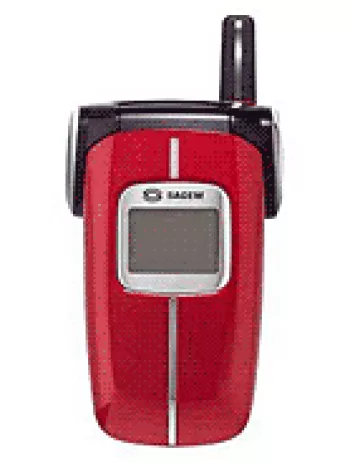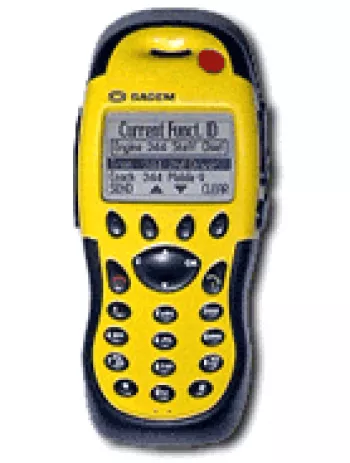
Overview of Sagem my300X
The Sagem my300X, a device that made its market entry in the fourth quarter of 2005, was introduced as a basic feature phone with essential functionalities. The phone was primarily targeted at users seeking straightforward communication solutions without the frills of advanced smartphone capabilities. Despite its simplicity, the my300X was appreciated for its practical features and reliable performance during its time.
Design and Build Quality
The Sagem my300X featured a compact and lightweight design, with dimensions of 105 x 46 x 14 mm and a weight of just 88 g. Its small size made it highly portable, fitting easily into pockets and small bags. The device was available in three colors: Blue, Silver, and Red, catering to different aesthetic preferences. The phone supported a Mini-SIM and had a durable plastic body, which was common for devices in this category at the time.
Display Characteristics
The phone featured a CSTN screen capable of displaying 65K colors. Its size was modest, with a 1.7-inch display and a screen-to-body ratio of approximately 19.3%. The resolution was 128 x 128 pixels, offering a pixel density of around 106 ppi. While not intended for media-rich applications, the display was sufficient for simple tasks such as text messaging and navigating the phone's menus.
Performance and System
The Sagem my300X was a feature phone, which means it operated on a basic proprietary system rather than the advanced operating systems found in smartphones. The phone was equipped with a modest internal memory of 3.2 MB, which limited storage options for contacts and messages. However, it was sufficient for handling the standard phonebook functionality and storing basic text messages.
Connectivity and Communications
The my300X supported GSM 900/1800 bands, which allowed for reliable voice communications over 2G networks. For data, the phone supported GPRS Class 10, although there was no EDGE or more advanced data connectivity options. In terms of local connectivity, the device included an infrared port, which was used for wireless data transfer between compatible devices. Notably, the phone did not feature Bluetooth, WLAN, or GPS, which reflected the technological limitations of feature phones from that era.
Battery Life
One of the standout features of the Sagem my300X was its impressive battery life. It housed a removable Li-Ion 850 mAh battery that offered up to 350 hours of standby time and up to 4 hours of talk time. This longevity made the phone appealing to users who required a dependable communication device without frequent recharges.
Multimedia and Additional Features
While the phone lacked a camera and advanced multimedia capabilities, it did support downloadable polyphonic ringtones, which were popular at the time. Users could customize the phone with various audio alerts, adding a personal touch. The device also included basic games and supported Java with MIDP 2.0, allowing for simple Java-based applications and games.
Messaging Capabilities
The my300X supported multiple messaging formats, including SMS, EMS, and MMS. This allowed users to send not only text messages but also multimedia messages containing images and sound. The inclusion of a WAP 2.0/xHTML browser enabled basic web browsing, though it was limited by the phone's capabilities and data connectivity options.
Conclusion
The Sagem my300X was a representation of mid-2000s mobile technology, offering essential features for communication in a compact and reliable package. Its strength lay in its simplicity, long battery life, and ease of use, which appealed to a broad range of users. While it lacked many features that are standard in modern smartphones, the my300X served its purpose well during its time on the market.
Key Features of Sagem my300X
- GSM Technology with dual-band support (GSM 900 / 1800)
- Compact and lightweight design with dimensions of 105 x 46 x 14 mm and weight of 88 g
- CSTN display with 65K colors and a resolution of 128 x 128 pixels
- Internal memory of 3.2MB with phonebook and call record storage
- Infrared port for data transfer
- Messaging support for SMS, EMS, and MMS
- WAP 2.0/xHTML browser for internet access
- Java MIDP 2.0 support for additional applications and games
- Removable Li-Ion 850 mAh battery with up to 350 hours standby time and up to 4 hours talk time
- Available in multiple colors: Blue, Silver, and Red
Disadvantages of Sagem my300X
- No EDGE support for faster mobile data.
- Discontinued model, no longer in production.
- Limited internal storage of only 3.2MB and no card slot for expansion.
- No camera available on the device.
- No loudspeaker, which may affect audio experience.
- Lacks a 3.5mm headphone jack, limiting audio output options.
- No Bluetooth or WLAN support for wireless connectivity.
- No built-in GPS for location services.
- No FM radio functionality.















View Also
More Phones
All Rights Reserved +13916 Phones © Mobilawy 2025

























